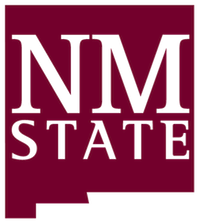Management of Post Fire Flood and Erosion
Post fire flooding and erosion is managed in multiple ways by communities, landowners, and federal, state, and local agencies.
Federal Lands
Interagency Burned Area Emergency Response (BAER Homepage) teams are convened after large fires on federally owned lands. Their goal is to assess the condition of watersheds after wildfire has changed the hydrologic response. In addition, BAER teams evaluate potential threats to values such as life and property. After considering the conditions and determining if an emergency response is warranted, BAER teams can implement treatments to stabilize soil, protect fish, wildlife, and archeological sites, prevent destruction of ecosystems, control the movement of water, sediment, and debris, and mitigate threats to health, safety, life, property, and downstream values-at-risk. They typically do this by applying various treatments, such as mulching or seeding to burned landscapes to reduce runoff of water and sediment. For more information on costs, effectiveness, and where to apply treatments, see the BAER Treatment Catalog.
State, Local, and Privately Owned Lands
Landowners can use protocols such as those used on federal lands and apply the same treatments to protect their property following a fire (see postfirenm.org). Funding sources exist to aid nonfederal and private landowners to respond and restore at risk watersheds (see Funding Sources). Following fires, the Natural Resource Conservation Service (NRCS) may assemble a State Emergency Rehabilitation Team (SERT) for publicly (state and local government) or privately owned lands. These groups develop recovery plans submitted for approval and funding through the NRCS Emergency Watershed Protection (EWP) program. The purpose of EWP is to mitigate threats to life, property, and infrastructure by providing technical assistance and funding following natural disasters. Public and private landowners are eligible for this assistance, but the program does require a project sponsor that is a public agency of state, local, or tribal government or a conservation district. Local conservation districts are excellent resources for assisting property owners in responding quickly and efficiently to post-fire flooding and erosion threats (see Communities Groups). Through EWP landowners can receive help in reestablishing vegetative cover, controlling gully erosion, protecting streambanks, removing debris, and stabilizing levees. Many resources exist to guide landowners through their response after wildfire. For more information and guidance (see Individuals, Communities, & Landowners).
Communities
The Natural Resource Conservation Service (NRCS) administers the Emergency Watershed Protection (EWP) program with the purpose of mitigating threats to life, property, and infrastructure by providing technical assistance and funding following natural disaster. The EWP program can assist communities with their response to imminent hazards caused by fire and post-fire flooding and erosion. The EWP program is one example of funding for communities after wildfire, but many others exist. Assistance may differ depending on where you live, with some programs specific to states or tribal governments (see Funding Sources). While conservation districts, government agencies, and community organizations play important roles in the emergency response, engagement from community members in the recovery process is critical to the success of efforts. It is important to communicate effectively with community members and victims of natural disasters. Community leaders should use resources (see Individuals, Communities, & Landowners) to organize their response and identify strategies to ensure results that protect life and property within their community. One especially effective tool communities can use to manage threats posed by post-fire flooding and debris flows are alert systems that provide advanced warning of significant weather events and allow time to prepare and reduce danger and damage. For more information on tools for communities (see Alert Systems).






